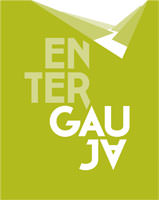
- Enter Gauja
- Things to do
- News & Events
- News
- Events
-
Latest events
31 Dec New Year's Eve at Mālpils Manor » 02 Jan Twilight Winter Walk in Cīrulīši »
- Eat & Drink
- Accommodation
- E-shop
Under the spell of this charming baroque pearl, you will encounter a rhythmic idyll – as you admire wall paintings in the most peaceful of surroundings, your imagination will vividly conjure up images of tranquil and carefree days at the wooden manor. And a ride in a horse-drawn carriage will remind you of the calm horseshoes the past, persuading you of the unhurried harmony of history.
 |
Accommodation in a Rural Manor HouseVisitors to the manor with time on their hands can extend their stay, residing overnight in the guest rooms in the manor house or in the "old school" apartments – in the very places, where once upon a time, the lords of the manor and their guests recovered their strength in anticipation of a new day. |
 |
Ancient Recipe RestaurantA slowly and properly prepared meal exclusively made from local and the freshest seasonal products, using revered age-old recipes will provide those who succumb to the manor’s and cultural values with an exquisite and flavourful experience. |
 |
Unique Wooden Manor HouseThe jewel of Ungurmuiža is a baroque-style wooden manor, in which one can clearly sense the rhythm of another age and admire its unique interior with ancient wall paintings. |
 |
Historic Wall PaintingsThe expressive paintings inside the castle – Russian grenadiers with the features of Peter the Great – are a vivid depiction of a dynamic historical epoch when Baron Campenhausen was saved by two Russian soldiers at the Battle of Poltawa. |
 |
Tea Drinking RitualIn the venerable Tsarist-period tea house, one can enjoy genuine peace and quiet, as well as fragrant teas, prepared from the fruits of nature. Slowly sipping tea will help you to arrange your thoughts and inspire pleasant conversation. |
Free WiFi | Free car park | Excursions in four languages | Concerts. A children’s playground | Roller skate hire | Premises for events, seminars and wedding ceremonies | A picnic spot | Walking trails
Photo: Helene Juliane von Campenhausen (1703 – 1775)
Ungurmuiža Manor flourished in 1736 when its builder and owner Balthasar von Campenhausen married Helene Juliane. The new mistress of the manor was hardworking and smart, besides she had a book-keeper talent. Everything in the manor is weighed, measured and written down - food, clothing, linen stock, sheep wool, honeybee colony and manor's family.
Ungurmuiža Manor used to be a gourmand paradise. There were fruit trees grown and used, as well as spices – laurel, lemon and orange trees, which flourished in stone pots. The manor could take pride in its home-made strawberry, raspberry, caraway, orange and wild orange liqueurs, whereas in distillery vodka was made and together with rye sent to Jūrmala in exchange for Baltic herring for salting. Also, almost thirty manor people received two quarts of beer every day!
Crawfish catching and hunting of forest animals was very important in Ungurmuiža. It was done according to a strict schedule by the manor’s men. They also had to find time for fishing in the manor’s pond where they could catch carp and perch.
The mistress of the manor not only knew how to count everything, but also knew how to plan. She accurately created a menu for daily life and for celebrations. Foods like bull legs, rice in wine, English-style veal, baked apples, almond cake, pudding and milk cream were put on the table in Ungurmuiža Manor. The delicious traditions are still being kept, allowing Ungurmuiža Manor to attract people who enjoy good food!
